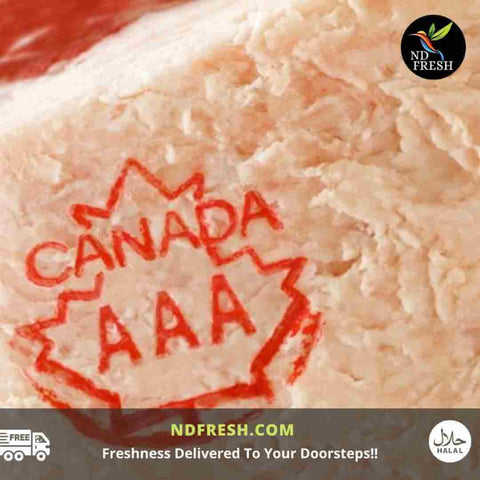
Have you noticed some coloured spots on your beef steak? Yes, maybe sometimes,am I right? Don't assume it is harmful to health, and that mark does not bring any danger. These marks are stamps placed on the meat defining its quality by the inspecting agencies.
Why Is It Needed?
When an animal is slaughtered in the US and Canada for human consumption, the meat should go through the inspection and grading . Meat inspection is designed to determine the health and quality of meat after death. After inspection, the inspectors define the grades of meat and stamp it on the carcasses.
The grading categorizes the meat by its quality and provides it firstly to the wholesale and retail meat operators,and restaurants. It will be in accordance with their need to purchase a grade of meat that suits their particular needs. Grading is really helpful to ensure that the consumer has a choice in selecting a consistent and predictable quality of meat.
Canadian Beef Grading
The Canadian Beef Grading Agency under the guidance of the Canadian Food Inspection Agency conducts the inspection and grading of beef meat . The marks you see on the meat is of the grading stamp, which differ in color, shape and size from province to province and by the type of the inspection, and its quality also. Most of the time, you can't see the full stamp on your steak. Because, inspectors try to place the stamp on the beef parts that won't be sold as a whole piece.
The grading is conducted based on clear cut criterias. Those are,
- Maturity of carcass
- Muscling
- Meat color
- External fat covering
- Marbling
- Meat texture
According to these criterias, the carcasses are divided into 13 beef grades in Canada. Consumers can source their meat at his convenience.Canada A,Canada AA, Canada AAA,Canada Prime,Canada B1,Canada B2,Canada B3,Canada B4,Canada D1,Canada D2,Canada D3,Canada D4 and Canada E.
The 4 A grades and prime gradings are for highest quality meats while the 4 Bs are for youthful carcasses aged less than 30 months.The 4 types of Ds are mature cow carcasses and E grade is stamped only on youthful bulls. Canada Prime is considered the most qualified one, because it has abundant marbling in it.Marbling is the fat content between the meat that will melt and make the meat more juicy, tender, tastier and textured.
It's Edible Ink
Don't panic about the ink used for stamping. The red or blue or green marks that you are seeing on meat may create a disgusting feeling in you. As the government cares for you in terms of quality assurance, that does not only in quality of meats, they are also considered the ink used for stamping. It's an edible ink made of vegetable based dye. The knick of colour won't impact the taste and your health.
In the US, this process of grading is known as USDA inspection. It is a different grading method than that of Canada. The grades are USDA select, USDA prime and USDA choice.USDAstandard, USDA commercial, USDA utility, USDA cutter and USDA canner.
Canadian beef grading is much better than USDA beef grading. Because Canada does not allow dark coloured meat, yellow fat, or other off-quality characteristics. The Canada A grade is a unique one in that there is less marbling but all other quality attributes are still present. This particular grade is well suited to those consumers now wishing to limit their level of fat intake.
At NDfresh we only source our meat from domestic farmers. That's why you can only see the Canadian stamping on our meats. The above mentioned grading and stamping are not in vain. It's a must process to ensure your quality meat. The next time you see a coloured mark on your meat, don't feel disturbed.
NDfresh is best for premium qualified meats, seafoods, vegetables and spices. Shop meat for your next meal from our store online and get it delivered at your doorstep as hygienically packed.

